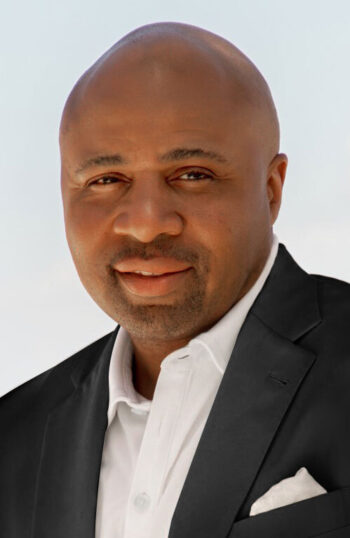As a Black foundation leader, shifting resources and power to organizations of color is not just personal: it’s strategic. For decades, these grassroots organizations have been sustaining democracy, advancing racial equity through advocacy and organizing. Despite their incredible accomplishments in every corner of the country, they remain grossly underfunded.
The perennial scramble to secure funding — not just for new programs and campaigns, but sometimes to simply keep the lights on — is a drain on their time, resources, and energy. This is a structural problem that philanthropy cannot solve through traditional grant cycles. This moment calls for a transformative approach.
What if we moved past incremental grantmaking or annual gift-giving and committed to a qualitative shift? What if we built or collaborated on endowments for advocacy organizations?
Such a move is a game-changing opportunity for our fellow foundations and donors seeking to have lasting impact. At Schott, we’ve been not just thinking about how philanthropy can utilize investment in endowments to advance racial equity and justice — we’re acting. As such, we launched our own collaborative endowment fund for three national racial justice alliances: the Racial Justice in Education Endowment (RJEE) Collaborative Fund. Here are some of the lessons we’ve learned so far and what we’re hearing from colleagues in the field.
Endowments are part of a philanthropic racial equity strategy.
CEP’s new research reveals that foundations and donors have contributed to endowments for museums, universities and hospitals at a much higher rate than to grassroots or advocacy organizations. Today, there are growing calls for the use of endowments as a tool to advance racial equity. But we have a long way to go: according to a study by Bridgespan, endowments for nonprofit organizations led by people of color are nearly four times smaller than those of white-led organizations, and their average percentage of revenue is less than half. Therefore, the singular act of endowing a BIPOC-led organization promotes racial equity by addressing this disparity.
While Schott is taking the journey to raise funds to endow three national racial justice alliances, we are well aware that there are a taxonomy of ways in which philanthropies can begin their journey — starting with making longer term investments.
The power of long-term investments is transformative. For 30 years, Schott Foundation has focused its philanthropic investment on longer-term funding for its grantees who advocate for racial equity and justice in public education. This continued and consistent investment has meant stability and sustainability for these BIPOC-led organizations — grantees like New York’s Alliance for Quality Education (Alliance), where Schott’s multi million investment over 20 years yielded nearly $6 billion annually for public education students across New York state.
As donors and philanthropic investors, too often we might attempt to solve community systemic problems with individual programmatic solutions. These critical services and programs, like afterschool, library books, and tutoring, provide much needed supports to children and families but are usually limited in the number of people supported or timeframe.
As much as these programs provide progress for some, there remains a critical need to invest and endow organizations that are seeing results promoting and passing equitable and inclusive policies that impact all children.
In the case of New York, that stability and sustainability enabled the Alliance to focus on the intense and long-term power-building and advocacy needed to capture such a big state-wide win.
Endowments are the next phase of trust-based philanthropy.
The phrase “progress occurs at the speed of trust” holds true in philanthropic endeavors. Philanthropy and wealth management professionals live in a universe where we understand assets and investment, yet getting the social impact and return from our investments requires us to move towards a more trust-based model of philanthropy.
Schott is co-investing and co-learning with its RJEE Collaborative Fund grantees. During the process we work with asset managers to provide investment expertise and knowledge to co-create in a trustworthy way with our partner organizations. Over the next several years, these grantee partners will be part of the investment committee and receive technical assistance and support, enabling them to take over management afterward.
In return, Schott expects to gain insights from grantee leaders as endowment funding enables their organizations to effectively plan and execute their strategies. Each organization will receive a $10M catalytic endowment investment enabling these organizations to become less dependent on the strategic changes of philanthropic institutions and shifting power to those closest to the community and solutions.
Endowments create diversity in portfolios.
Since endowments are a familiar concept to wealth advisors and philanthropy executives, we can apply the same standards to our philanthropic portfolio that we apply to our investment portfolio. That is, establishing a balanced portfolio of asset classes to ensure stability and higher returns.
In a democracy, community advocates and grassroots organizers can be considered a “blue-chip” asset class. Whether you are funding in a particular issue area or addressing a social impact or implementing a policy or legal strategy for greater return, you will need these organizations on the ground as part of your portfolio.
As wealth managers and philanthropic executives, we can bring along our donors and board of trustees in transferring these investment principles to our programmatic philanthropic strategies and portfolios. And just like for our investment portfolios, our horizon for returns must take three, five, and 10-year horizons. We cannot solve racial inequities in a grant cycle.
There’s more than enough room at the table for philanthropic partnerships.
Schott is committed to building its own learning and sharing our experience with our RJEE Collaborative Fund with our fellow funders. We expect to confront the challenges that other donors and philanthropies have faced head on and share these experiences — challenges like gaining the needed knowledge, addressing the fear of “cannibalizing” donors, or fear of losing greater or immediate investment, and most importantly, implementing a trust-based model for the organization and leaders to whom the endowment is provided, or collaborating with other others to do so.
Perhaps the most salient views come from youth and public education advocacy grantees, who see endowments as an opportunity to effect and sustain the transformative policies and changes in their communities. Here’s what some of our grantees have shared when reflecting on what an endowment would mean for their organization:
- Mina Hosseini, of P.S. 305, said, “An endowment would offer flexibility to address and adapt to the needs of the current moment.”
- James Lopez, who leads PowerU, said, “An endowment gives the people running the organization the space to actually be more collaborative with the funder and actually think about strategy long-term.”
- Maria Cole, of Common Purpose, said, “It would our expand our capacity exponentially: to be able to identify resources that could create opportunities for people to fully commit to what we’re doing.”
- Gina Womack, who heads Family and Friends of Louisiana’s Incarcerated Children, described having an endowment as “More space for your youth, staff to do the advocacy, more capacity building. We have so many other leaders that we’re ready to move into the organization. We need an endowment for all those things.”
Let’s think about how we move past just transferring grants, to long-term commitments and transferring wealth through endowments. If there’s any sector that knows the power of endowments, it is the philanthropic sector. If there’s any movement that needs more resources and stability, it is those working toward racial equity and justice. And if there’s any moment for us to collaborate as philanthropic partners to better position grantee partners for future battles – it’s today.
John Jackson is president and CEO of Schott Foundation. Find him on LinkedIn.
Editor’s Note: CEP publishes a range of perspectives. The views expressed here are those of the authors, not necessarily those of CEP.




